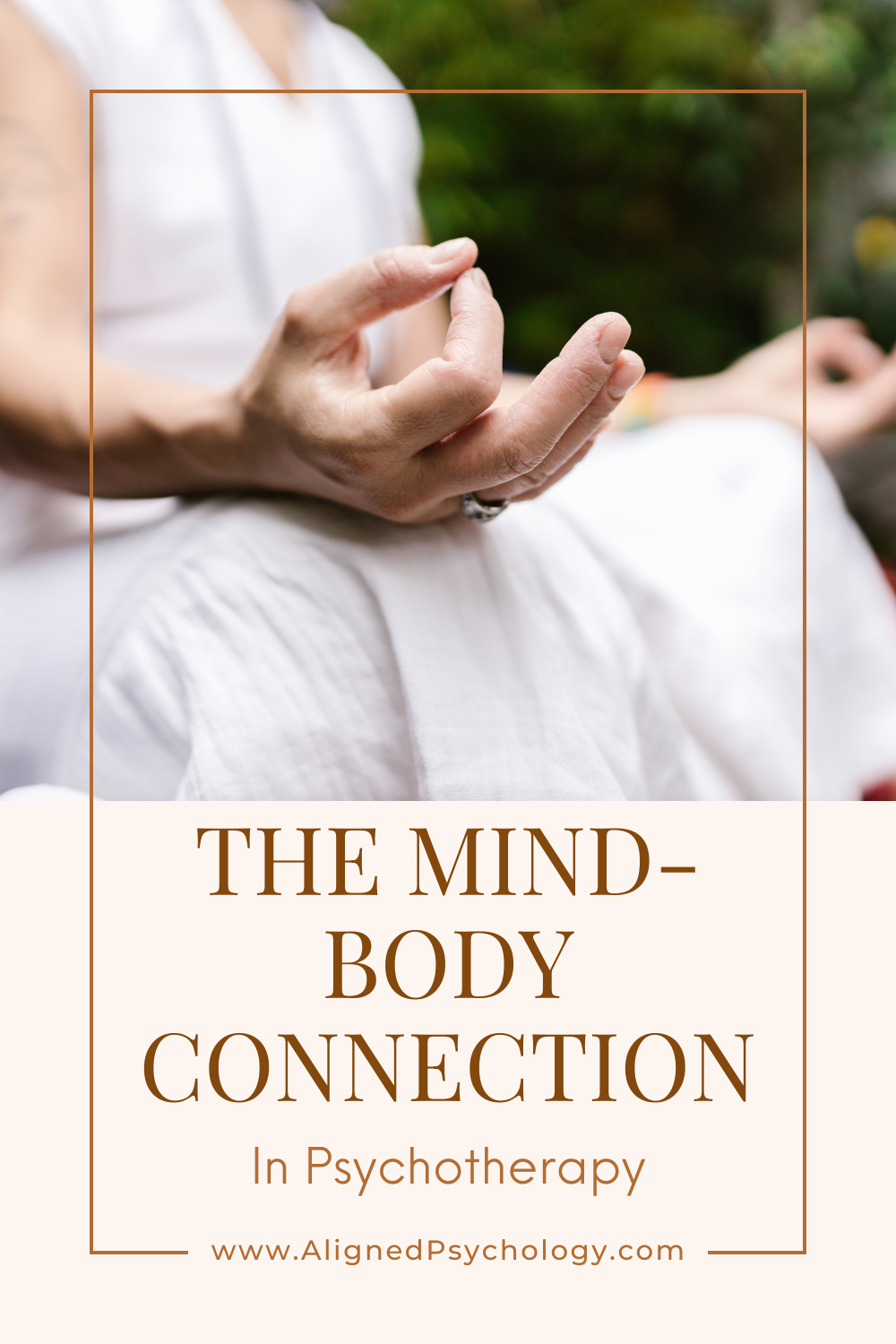The Mind-Body Connection in Psychotherapy
The Mind-Body Feedback Loop
It all starts with how the body and brain react to what we encounter in life. Early ideas, like the James-Lang theory, suggested that emotions begin with a physical reaction. For example, when you see something startling, your body reacts first (like your heart racing), and your brain interprets that as fear. While this idea was groundbreaking, modern science shows it’s more complex—our brain also plays a major role in shaping emotions, alongside these bodily reactions.
Emotions evolved to help us survive. They prepare us to react to different situations, like danger or opportunities for connection. Many of these responses happen automatically, without us even realizing it. For example, your body might tense up when you feel nervous, even if you’re not fully aware of what’s causing it.

How the Body Experiences Emotion
The body processes emotions through three main pathways:
Internal Signals: These come from within, like changes in your cells or chemical signals in your bloodstream. For example, when you feel stressed, certain chemicals help your brain pay attention to what’s happening and store memories of the experience.
Muscle Movement: Your muscles also play a role. How you move or hold your body in certain situations—like standing tall when you feel confident—gets stored as a kind of "body memory" that connects to emotions.
Touch and Sensory Input: Information from your skin, like the feeling of a warm hug or a cold breeze, also helps shape how you perceive and react to the world.
These pathways work together to give you a sense of self and connect your brain to your body. This feedback loop is crucial for processing past experiences and navigating the present.
The Nervous System and Emotional Responses
A key player in the mind-body connection is the vagus nerve, a major communication pathway between the brain and body. It helps regulate emotions, reactions to stress, and even social behaviors.
Dr. Stephen Porges’ Polyvagal Theory explains how this system evolved to help humans survive and thrive. The theory highlights three main responses our body uses when faced with situations:
Freeze (Dorsal Vagal Response): When faced with overwhelming danger, the body may "shut down" into a freeze state. This is a survival mechanism where the heart rate slows, breathing becomes shallow, and the brain’s ability to think clearly is limited.
Fight-or-Flight (Sympathetic Response): This is the body’s classic reaction to perceived danger. It pumps energy into your muscles, readying you to either confront the threat or escape.
Social Engagement (Ventral Vagal Response): The most recent evolutionary development, this system helps us feel safe, connect with others, and think critically. It allows for calmness, creativity, and meaningful social bonds.
Why This Matters for Mental Health
Understanding how the mind and body interact helps us address stress, trauma, and emotional health more effectively. For instance:
Trauma and Fight, Flight and Freeze Response: People who’ve experienced trauma often feel stuck in a freeze state, which can make it hard to connect with others or feel safe. They may also more easily move into a flight or flight state when they feel a threat. They can also be more likely to perceive a threat that is not there. When we are in flight, flight or freeze we are not able to be fully connected because our social engagement system is offline. This is because the dorsal vagal (fight, flight, freeze) and the ventral vagal (social connection) systems don't work at the same time.
Social Connection: A sense of safety and belonging is crucial for healing and growth. When we feel safe, our social engagement system kicks in, allowing us to build relationships and solve problems.

In Short
The mind-body connection is a dynamic, ongoing process where the brain and body continuously shape each other. By understanding how these systems work, we can better manage stress, improve emotional health, and create environments that promote safety and connection.
Whether it’s through mindfulness, movement, or therapy, strengthening the connection between your brain and body is a powerful step toward emotional well-being. Somatic therapy is an effective way to learn these techniques and build these skills. Learn more about somatic therapies in my next post.

ABOUT THE AUTHOR
Dr. Chelsea
Chelsea Levenson PhD, Clinical Psychologist, specializes in creating safe, trusting space for clients on their journey toward healing. She specializes in somatic therapy and improving the mind-body connection. She is trained in trauma-focused modalities including Hakomi Somatic Therapy, EMDR, and IFS. She believes self-compassion, reflection, and awareness are keys to create lasting change. She worked in private practice, and intensive trauma treatment settings, including residential, PHP, and IOP levels of care.
Thank you for being part of a community of humans that deeply cares about healing.
We are honored that you stopped by and hope our resources will continue to bring value to your life.
We are accepting new clients in California, and referrals are always appreciated.












